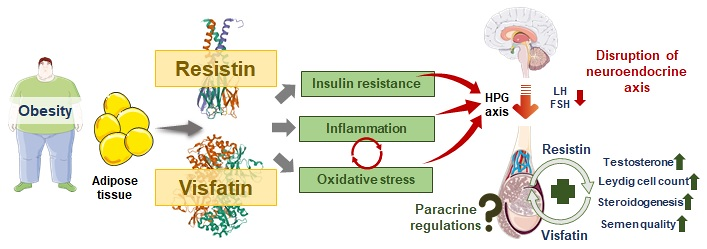
Resistin and visfatin: ‘connecting threads’ of immunity, energy modulations and male reproduction
Abstract
Adipokines, mostly produced by white adipose tissues, have been established to be endocrine factors which are also essential in energy homeostasis. More recently, their contribution in fertility regulation has been recommended. Resistin as well as visfatin are unique adipocyte-derived signaling chemicals whose expressions enhance in advanced obesity and are implicated in insulin resistance as well as type-2 diabetes. They are also found to be immune modulators and may participate in aggravating inflammatory responses which may partly explain obesity-mediated systemic inflammation. They are yet much less explored adipokines with potential to regulate metabolic rate, immune homeostasis as well as fertility. These adipokines are shown to be expressed in the hypothalamus in an area in charge of energy balance. Evidence suggest that they can potentially affect the hypothalamo-pituitary-gonadal (HPG) axis thereby modulating reproductive functions. They are also found to be expressed highly by the testes. In rodents, resistin and visfatin have actually been shown to positively modulate Leydig cell number and steroidogenesis. Additionally, visfatin exists in the human spermatozoa and may play role in the sperm maturation. However, reports on the impact of resistin and visfatin on human male fertility are inconsistent. In this article, we review the available literature on the role resistin and visfatin on male reproduction and integrate the mechanisms to discuss if they act as sensor for body energy dyshomeostatis and modulate male reproductive functions as per the metabolic status.
Keywords
Full Text:
PDFISSN 2347–9825
Authors/visitors are advised to use Firefox browser for better experience of journal site.
Open Access: Researcher from developing/low economy countries can access the jorunal contents through WHO-HINARI .
 ISSN 2347-9825
ISSN 2347-9825

